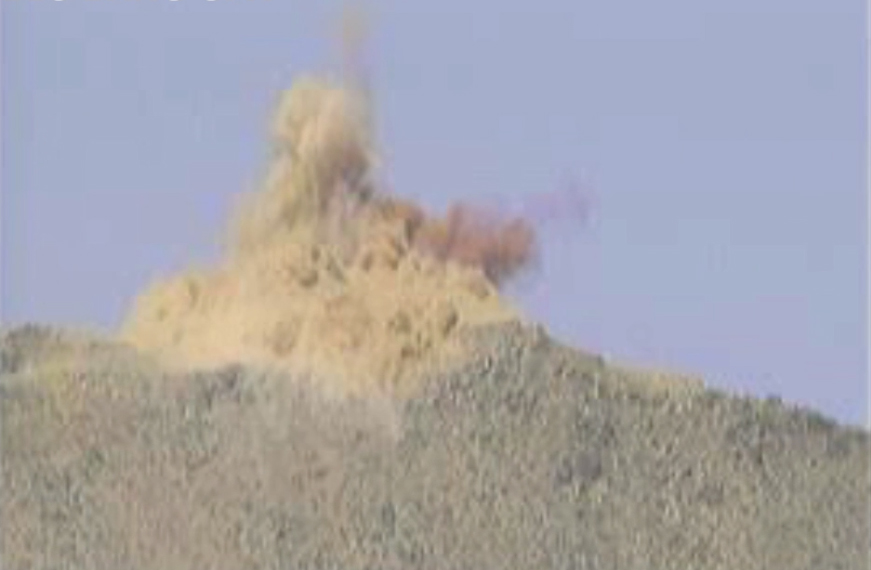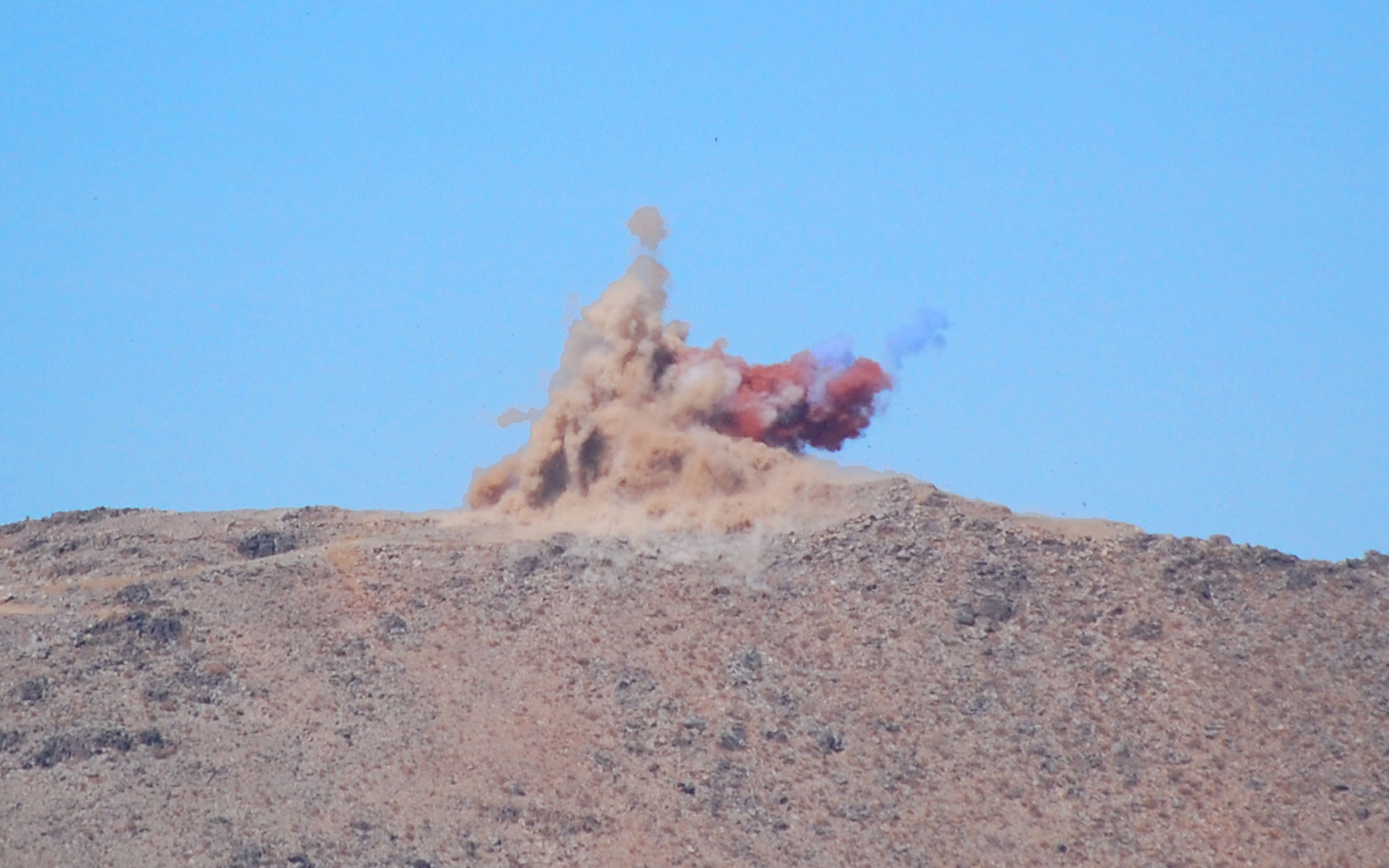Image List
-

This still frame from a video shows the moment after the first blasting at Las Campanas to prepare the way for the Giant Magellan Telescope. Over the next few months, more than 70 controlled blasts will break up the rock while leaving a solid bedrock foundation for the telescope. Once completed near the end of the decade, the GMT will have unprecedented capabilities, allowing it to peer back to the dawn of time, witnessing the birth of the first stars, galaxies and black holes, while also exploring planetary systems similar to our own around nearby stars in the Milky Way. It also will probe the nature of dark matter and dark energy.
U.S. Department of State -

High-resolution photo of the first blasting at Las Campanas to prepare the way for the Giant Magellan Telescope.
Francisco Figueroa / GMTO